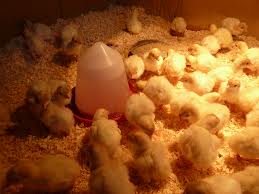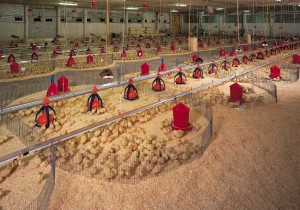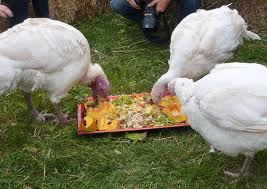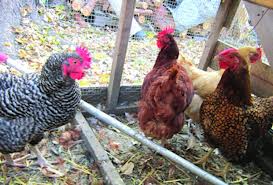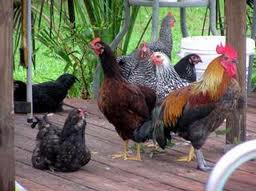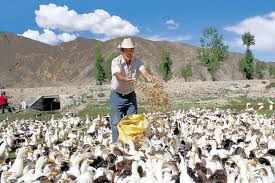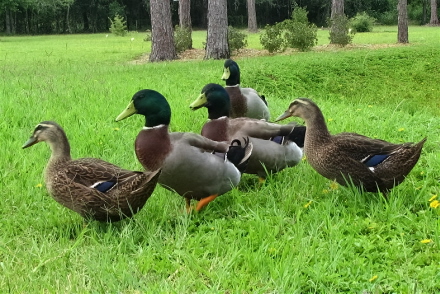Raising of Turkeys
Turkeys are not popular in ASIA. Its cause may be ignorance about their nutritive value or disliking for their eggs and meat. In Western countries mini (smaller size) turkeys which are finished around 12-13 weeks weighing 4.7 kg and midi (medium size) turkeys, finished around 15-16 weeks weighing 6-7 kg are becoming popular nowadays. Like broiler, smaller turkeys are reared in intensive system, that too not fully controlled environment, while larger birds can be raised in simple shelters of pole-barn type or even on range.
Brooding
Brooding can be done on wire floor or on concrete floor with litter. The house must be draft-free and litter should be managed properly to keep it in dry condition to reduce the risk of parasite infestations. The brooding temperature in first week may be kept at 35°C with proper insulation of house to maintain house temperature at 25- 26°C with supplementary heating during initial stage of brooding. At the same time adequate ventilation should also be provided. The temperature difference of 8-10°C between brooder area and house is maintained for efficient growth. The mortality in poults during early stage many a times, may be because of lack of feeding and drinking facilities. So these facilities should be provided under bright light.
Once heat requirement is over at 8-9 weeks of age, turkeys can be reared at cooler temperature of 16°C. Raising turkeys on deep- litter is easier method and becoming popular. The health care is offered by preventive vaccination and essential medication from time to time.
Growing
Turkeys can be very well grown on range. But it requires clean fields on which poultry or turkeys have not been raised for previous two years. The land can be best partitioned into paddocks for 500 turkeys by fencing it around 3-3.5 in high for protecting them from predators. Simple thatched shelter of straw bales and roosts are sufficent for turkeys because of their hardiness. Feeders and waterers should be kept under roof to provide protection from animals, wild birds, climate and predators.
Intensive Rearing
Adequate floor area and ample fresh air should be provided for growing birds in intensive rearing. Turkey yard with roosters, feeders and waterers under lean-to roof attached to farm building can be used for rearing. Alternatively a pole shelter in the form fully covered compound consttucted out of rough poles of timber posts or discarded railway sleeper can be installed. The roof can be made by use of wire netting overlaid with corrugated roofing material or building felt. Side etiaS and back walls are totally or partially blocked with straw bales, polythene or other sheet but front portion is fitted with large mesh netting like chain link. Waterers and feeders are approachable from front. A section of 12 x 12 in can house around 250 to 450 turkeys.
Cage system is also used to raise turkeys above ground level on small scale. Now, lot of modem units rearing turkeys on large scale are using houses like that of chicken having effective insulation,mechanised ventilation system, supplementary heating and light with other arrangement to provide controlled environment. Since turkey is a fast-growing bird, they should be provided adequate management facilities (Table 20.1) in respect of floor, feeding and watering space, as more space is always beneficial.
Because the poults grow faster they should be provided increased head room under brooder, floor space, feeding and watering space and ventilation depending on size and age. Around 7-8 weeks of age they are shifted to growing sheds to achieve still faster growth. If turkeys are to be reared in closed shelter, before shifting their bills should be trimmed to prevent cannibalism. They can be very well managed in groups of 240-270 with adequate management facility for next 12-24 weeks. When roosters are not used, some straw bales can prevent young turkeys from congregating, when groups have more strength.
Intensive rearing needs skilled management because incidence of vices and disease is on higher side in confinement. Hygiene. sanitation and cleanliness at feeding and watering places and supply of adequate clean litter are essential. Overcrowding and inadequate ventilation, many a times results in poor performance.
Feeding
Even though management of turkeys in respect of housing, lighting, sanitation and hygiene and health care is similar to chickens but feeding of them differs significantly from that of chickens (see Chapter 10 of this book).
Pouits are very slow in accepting their feed which is well-known fact. Therefore, they should be invoked to eat by providing easy access to feed with supply of ample feeders and bright light. The same thing holds good for drinking water also. All growers are supplied with ad libitum feeding pattern. Sometimes grains in measured quantity are offered in addition but at fixed timings. In case of range rearing feed should be given in measured amount with decided times, so as to be consumed by birds within short time to avoid feed consumption by wild birds or vermins.
In brooding stage upto 8 weeks, poults are provided mash containing 23-24 per cent protein, which can be reduced to 19-20 per cent by 10 weeks and 15 per cent by 17 weeks. The finishing diet is offered generally 3-4 week prior to disposal of birds. When grain ration is provided it should be necessarily supplemented with oyster shell.
